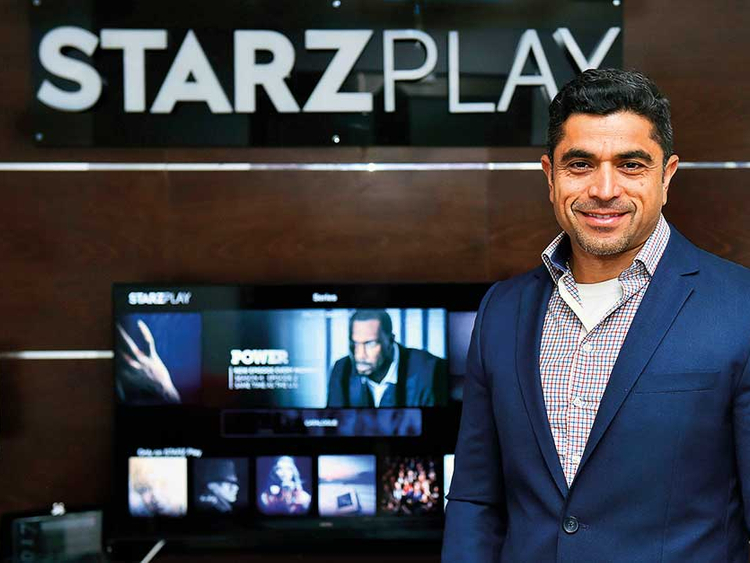
Dubai: There’s no knowing what viewers will like. These days, the uncertainty even extends to which of your viewers will like what.
As what the streaming TV service provider Starz Play just found out. When it added Hindi movies to its regional platform, the thinking was quite clear — get as many Indian expat subscribers to sign up for a diet of the latest movies out of Bollywood. And, where possible, rope in a few Arab viewers as well.
Things haven’t panned out that way.
“When we started out six months ago with these movies, the theory was 80 per cent of the viewers would be from the Indian diaspora,” said Maaz Shaikh, CEO of Starz Play Arabia.
“Our library now has 500 of these movies and subtitled in Arabic. But we are finding that 80 per cent of those who tune in of our subscribers tuning in for Bollywood fare are Arabs, be it in the UAE, Saudi Arabia or anywhere in the region.
“I guess the moral of the story is that a Salman Khan [the Indian film actor] is just as popular in Tunis or Marrakech as he is in Mumbai or Dubai.
“What it also showed us was that our initial assumptions of who our viewers would be were not entirely correct. We have not been as successful in acquiring subscribers from the subcontinent for the Bollywood fare. We need to keep doing a better job of creating compelling offers.”
For streaming video-on-demand providers, there is everything to play for in the UAE and the wider region. Apart from Starz and Netflix, a handful of operators are vying for viewer attention, including the pay-TV platform OSN with its ‘Wavo’ app. Apart from these, there are a few platforms targeting specific demographics with specific language content.
“Even with the extremely high-growth streaming services in the UAE since 2016, actual penetration is less than 10 per cent of the potential audience,” said Shaikh. “Our estimates place the potential market in the UAE at 2 million to 2.5 million subscribers web TV — it means there’s still so much to do.”
The web TV industry makes these assumptions based on the broadband penetration in a country. According to Shaikh, any user with a 10 Mbps or higher fixed-line connection can be a likely subscriber for TV content delivered via the web. The other way to measure the potential market is through smartphone take-up rates.
“Based on these factors, the UAE has an 80-85 per cent fixed broadband penetration and nearly 60 per cent of these homes have 10 Mbps or more,” he added. “And everyone knows the UAE has one of the highest smartphone usages [80 per cent plus] in the world. That’s why I believe that true growth is still to come.
“We are not bothered by the number of competing streaming service providers. At a certain point in the growth cycle, a user could end up subscribing to two such services. We intend to be one of them.”
But what of the current take up rates? Starz claims that a typical subscriber now consumes 30 minutes of content on average each day, most of which done in a single sitting. The highest usage rates are — no surprises there — between 8pm to midnight, and particularly after 10pm. And on weekends, the usage shoots up to an average of one to two hours a day.
“The other metric we track to gauge industry growth is how many people immediately play content after signing up,” said Shaikh. “That’s very important for us, because it shows true engagement with a customer. Right now, 85 per cent start downloads and immediately play the content.
“We are also recording conversion rates of 50 per cent — of subscribers staying on and paying after the first month of free trials — in the Gulf. In the UAE, the conversion rate has now touched 65 per cent. For comparison’s sake, our average in the US is 50 per cent.”
Pakistan becomes the next stop for Starz Play
After its blanket coverage of the Middle East, Starz Play has now extended the beam to cover Pakistan as well.
“We started with 5,000 hours of content for viewers in Pakistan, including 500 hours of Urdu programming” said Maaz Shaikh. “As soon as we got the content together, we were good to go. It was only a question of extending the beam from here to Pakistan — it’s the same platform, same technology.”
The Pakistan extension will also help Starz in another way — bring some of that content to show the Pakistani diaspora in the Gulf as well as potential takers among Indian and Arab viewers. I have no doubt that we will get the content mix right.”












